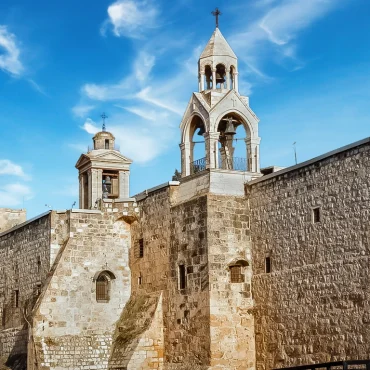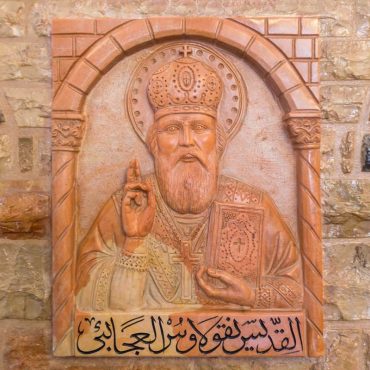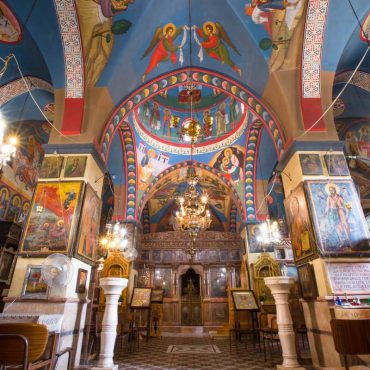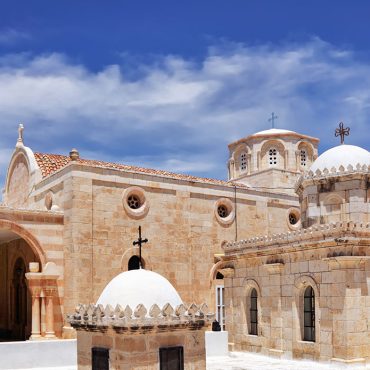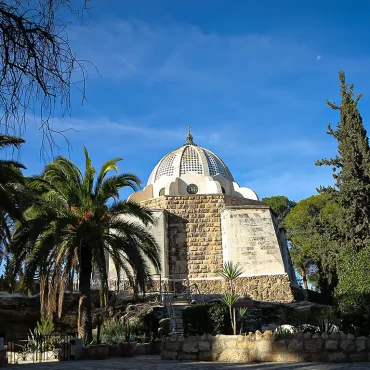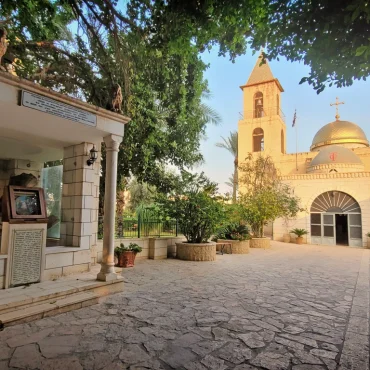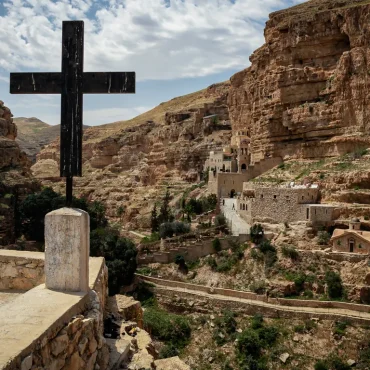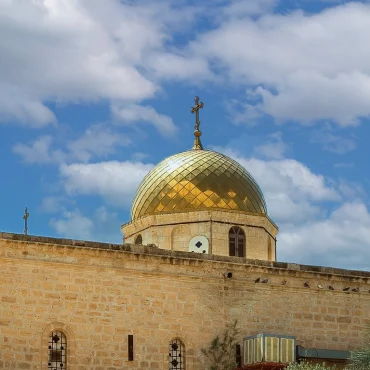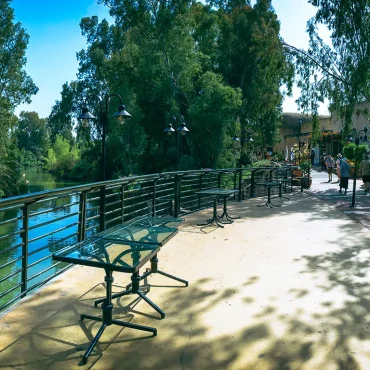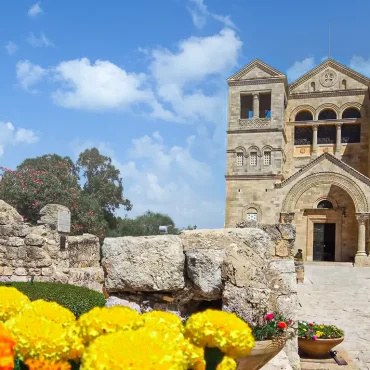For the Christian world, the area of Palestine, on both sides of the Jordan River, and the Sinai Peninsula constitutes the Holy Land where all the religious and historical events of the Old and New Testament came to pass. The incarnation of the Son and Word of God took place here, and it was here that the first Church was founded. Within this area, the religion of Judaism developed and Christianity was first proclaimed and established. Prophets, Patriarchs, kings-representatives of God lived and took action here.
These events of Theophany, as described in the Holy Bible, are linked to geographical areas, names of real locations, rivers, mountains, plains, gorges and topographic sites of special note. It has been historically proven that, during the first centuries, Christians had had to fight hard for their survival. The great change came at the beginning of the 4th c. with the triumph of Christianity and its ultimate recognition as the only official religion of the newly-founded Byzantine state and of the imperial court.
It was then that the whole of Palestine was officially declared Holy Land and the emperor himself, Constantine the Great, provided the necessary means and money for the erection of the first magnificent churches in the Holy Land, e.g. the Calvary, the Holy Sepulchre, the site of the Ascension on the Mount of Olives, the Cavern of the Nativity in Bethlehem, the Oak of Mamre in Hebron. The arrival of St Helena, mother of Constantine the Great, to the Holy Land, and the establishment of these first Christian churches paved the way for the recognition and identification of several other sites related to the events of the Bible.
In the course of the 4th, 5th and 6th c., Byzantine emperors, Patriarchs and bishops, ordinary monks and faithful pilgrims would rush to Palestine in order to visit and venerate the God-trodden land. Their aim was to see all likely sites of religious relevance, the graves of the prophets and kings of the Old Testament, the villages wherefrom Christ and His disciples had passed through. Churches and monasteries were then built on these sites, immediately turned into centres of veneration.
During the years of Byzantine rule (325-640), the entire country was filled with churches and shrines. Most of the monasteries would be destroyed by the Persian invaders, churches and shrines burnt. The Arab conquest that followed a few years after the Persian invasion, made things even worse. The number of Christians in Palestine diminished gravely and monasticism in the desert vanished, with the exception of a few monasteries that kept running in the face of adversity.
Towards the end of the 10th c., only a few main monasteries had remained intact in the hands of Christians. The decisive intervention of Byzantine emperors, as well as the persistent presence of the heroic monks of Orthodoxy contributed to preserving the Christian and holy character of these sites. The Crusaders’ conquest of Palestine and its return to Christian rule would temporarily make things better.
The 700 years that followed the removal of the Crusaders to the mid-18th c. are considered to be the darkest and most difficult in the history of the Holy Sites. The Mamluks and later on the Ottoman Turks took advantage of the situation and turned the sites into “merchandise” sold to the highest bidders. This obscenity would carry on to the mid-19th c. The year 1857 saw the signing of the renowned Status Quo of the Holy Land Sites, an agreement that determines the ownership and rights of each Community, setting out the relations between them. Today, the Holy Sites are centres of reconciliation and mutual Christian love.

